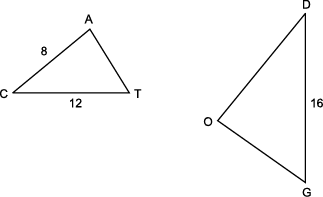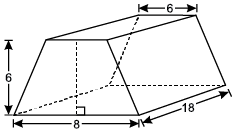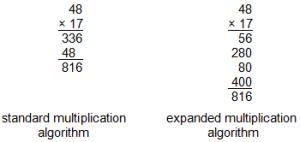Test Information Guide
Field 53: Elementary Mathematics
Sample Multiple-Choice Questions
Number Sense, Operations, and Data Analysis
Objective 0001
Understand number theory, the structure of numeration systems, and the properties of the real number system.
1. Simplify the expression  .
.
- Answer
- Correct Response: D.
Correct Response: D.
Objective 0002
Understand principles and operations related to integers.
2. Use the algorithms below to answer the question that follows.
standard multiplication algorithm. start layout, first row forty eight, second row times seventeen, third row horizontal bar, fourth row three hundred and thirty six, fifth row forty eight aligned left, sixth row horizontal line, seventh row eight hundred and sixteen, end layout. expanded multiplication algorithm. start layout, first row forty eight, second row times seventeen, third row horizontal bar, fourth row fifty six aligned right, fifth row two hundred and eighty aligned right, sixth row eighty aligned right, seventh row four hundred aligned right, eighth row horizontal line, ninth row eight hundred and sixteen, end layout.
A significant difference between the standard multiplication algorithm and the expanded multiplication algorithm is that the expanded multiplication algorithm:
- can be used with both positive and negative integers.
- emphasizes the use of the distributive property.
- minimizes the need to memorize multiplication facts.
- makes knowledge of place value unnecessary.
- Answer
- Correct Response: B.
Correct Response: B.
Objective 0003
Understand principles and operations related to fractions.
3. Simplify the expression below.


- 2

- 4
- 5
- Answer
- Correct Response: D.
Correct Response: D.
Objective 0006
Understand the fundamental principles of probability.
4. A student rolls two dice. One die has six faces, each face marked with 1, 2, 3, 4, 5, or 6 spots, and the other die has eight faces, each marked with 1, 2, 3, 4, 5, 6, 7, or 8 spots. How many outcomes are in the sample space for this experiment?
- 14
- 28
- 48
- 64
- Answer
- Correct Response: C.
Correct Response: C.
Patterns, Relations, and Algebra
Objective 0007
Understand patterns and the properties of functions and relations.
5. Use the information below to answer the question that follows.
A particular function is defined as follows: Take any integer greater than zero. If the integer is even, multiply it by 2. If the integer is odd, add 1 and then multiply the result by 2.
What is the domain of the function?
- the number 2
- the set of even integers
- the set of odd integers
- the set of positive integers
- Answer
- Correct Response: D.
Correct Response: D.
Objective 0009
Understand properties and applications of linear relations and functions.
6. Use the inequality below to answer the question that follows.

Which of the following best represents the solution of the inequality above?
- Answer
- Correct Response: D.
Correct Response: D.
Objective 0011
Understand properties and applications of quadratic, exponential, polynomial, and rational functions and relations.
7. A scientist determines that the amount of mold growing in a laboratory culture triples every 4 days. If there is originally 0.5 grams of mold in the culture, which of the following equations best models the amount of mold, M, at a given time t?
- M = 0.5(3)0.25t
- M = 0.5(3)4t
- M = 3t + 0.5
- M = t3 + 0.5
- Answer
- Correct Response: A.
Correct Response: A.
Geometry and Measurement
Objective 0013
Understand the principles of Euclidean geometry and use them to prove theorems.
8. Use the triangles below to answer the question that follows.

If ΔCAT ∼ ΔDOG, what is the measure of  ?
?
- 9

- 10

- 24
- 32
- Answer
- Correct Response: B.
Correct Response: B.
Objective 0014
Apply Euclidean geometry to analyze the characteristics and properties of two- and three-dimensional shapes.
9. Use the diagram below to answer the question that follows.

The diagram shows a right trapezoidal prism. What is the area of a horizontal cross section of the prism, 3 units above and parallel to the base of the prism?
- 42
- 108
- 126
- 144
- Answer
- Correct Response: C.
Correct Response: C.
Objective 0015
Understand the principles and properties of coordinate and transformational geometry and use them to prove theorems.
10. An equilateral triangle is constructed on a set of coordinate axes. If one vertex is at the origin and another is at the point (a, 0), which of the following would be the y-coordinate of the third vertex of the triangle?
- Answer
- Correct Response: A.
Correct Response: A.













